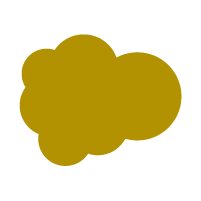The North and South Poles may seem millions of miles away from Edgbaston, but Winterbourne can boast several connections to polar exploration and research. As we’re now in the depths of winter, it seemed an appropriate time to find out more and do some digging in the comfort of the archives!
After it came into the hands of the University, Winterbourne’s garden served the needs of education and research. In the 1960s, laboratories and additional glasshouses were erected to accommodate the British Antarctic Survey, which was based here until the 1970s. The pioneering phytotron, which controls conditions to create specific microclimates, was built so that Antarctic species could be grown right here in Birmingham.

Phytotron
The island of South Georgia was the focus for plant gathering, and many expeditions to this windswept island took place. Winterbourne gardener David Jeacock worked with the South Georgia plant collections. In an oral history interview, he recalled: ‘a lot of the plants that they brought back for study would be absolutely horrendous to the normal gardener, I suppose, because they were all things like Polystichum which is a very small fern, quite minute!’
Visitors will be familiar with the Orchid House, but did you know that it was originally constructed to grow plants native to the Antarctic?


Orchid House
Winterbourne’s printing press can also tell a story about Antarctic exploration. When Shackleton sailed south in 1907, he took with him a Crown Arab printing press, identical to the one we have at the Winterbourne Press. The Crown Arab was supplied flat-packed, which made it easier to transport. The expedition members erected the press in their hut on the ice and used it to run off an in-house magazine.


Crown Arab Press
Turning our faces to the north, we find in our archive the logbook of an expedition to the Arctic Circle. In 1959, a group of botany students went to Northern Norway and Lapland to collect plants native to the tundra. One participant wrote: ‘I have not the command of the English language to recall the beauty of today’s wanderings’. They were excited by their first sighting of reindeer, but these soon became commonplace.


University of Birmingham Arctic Expedition log book
They collected hundreds of plant specimens, which they carefully documented and preserved. These specimens are now at Winterbourne as part of the University Herbarium.


Plants collected in Lapland
 3°C
3°C